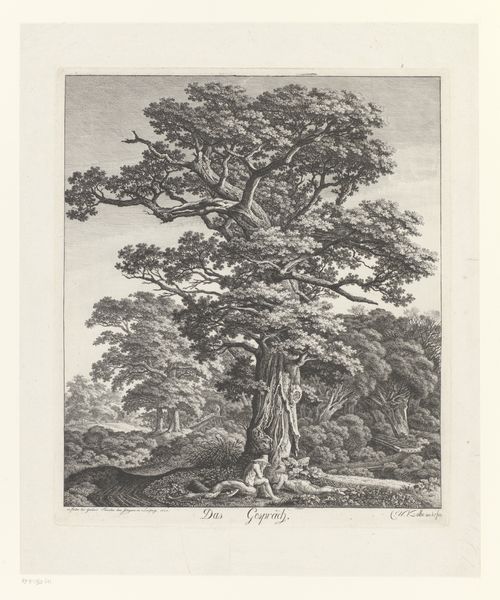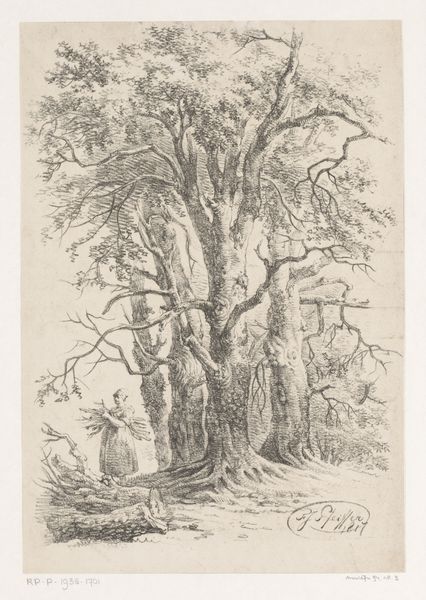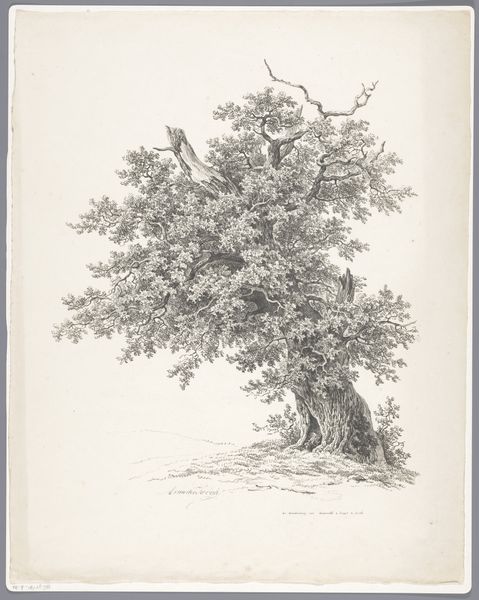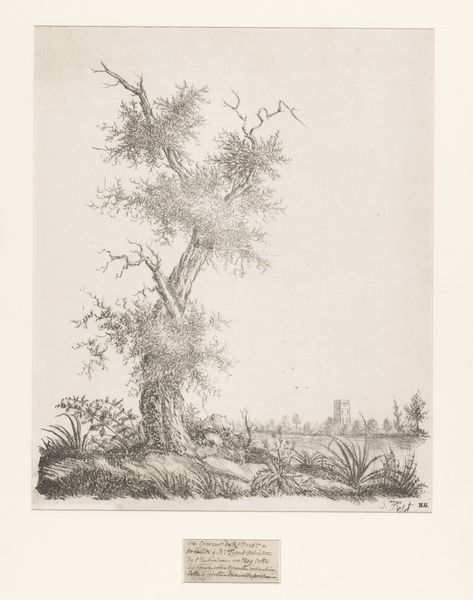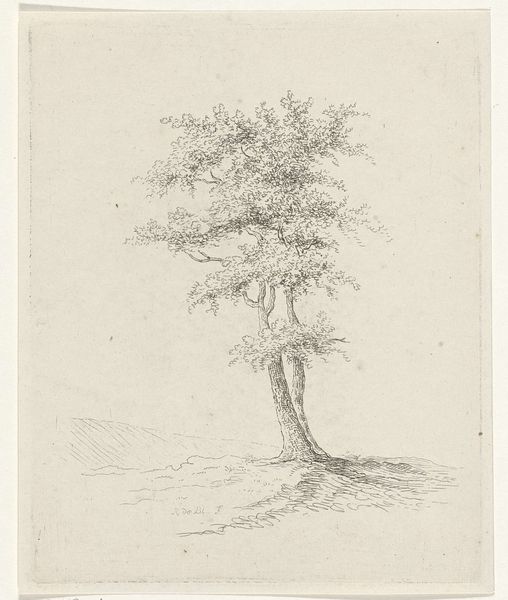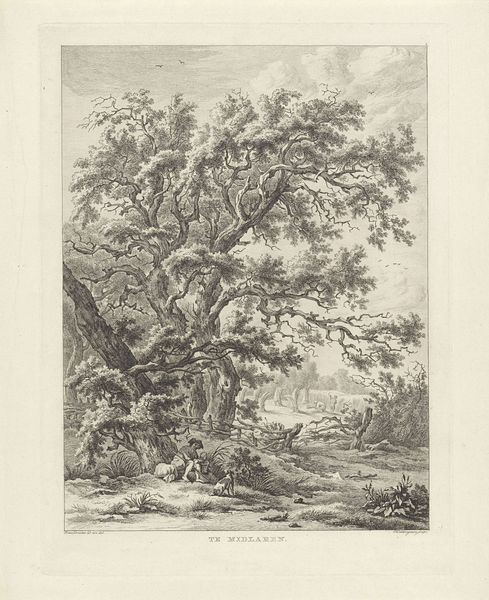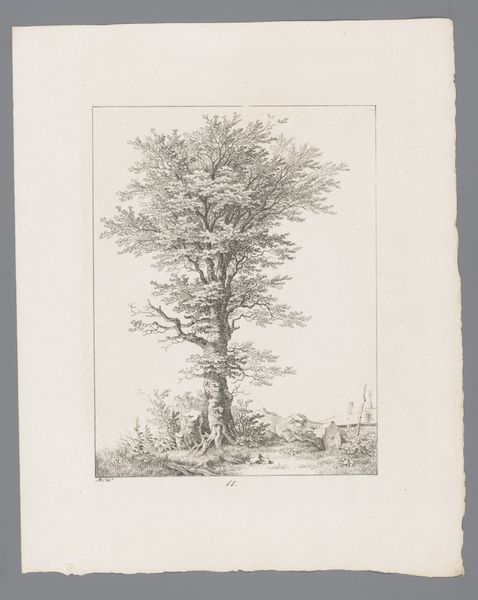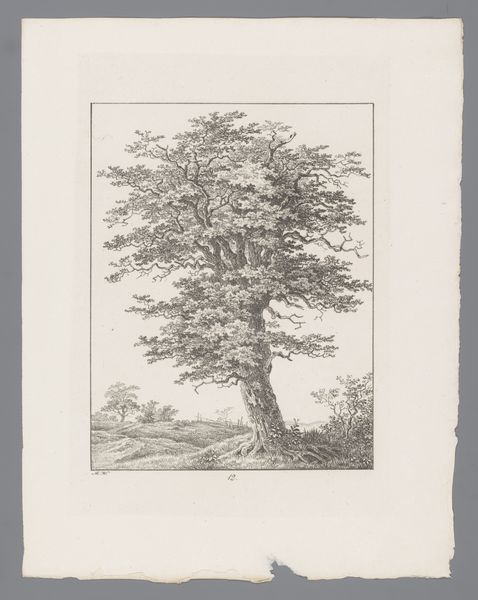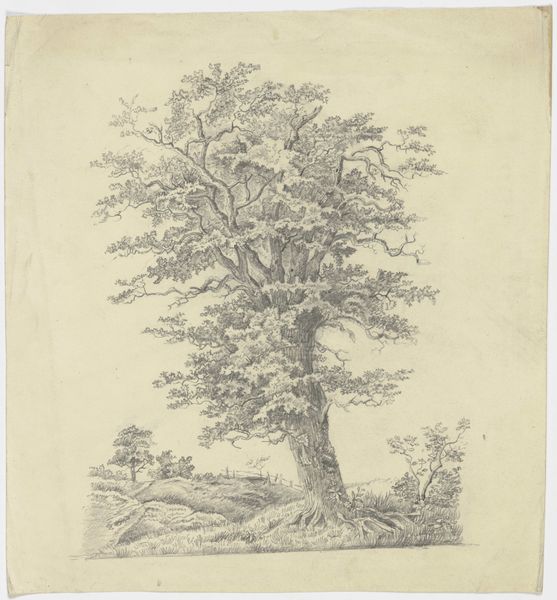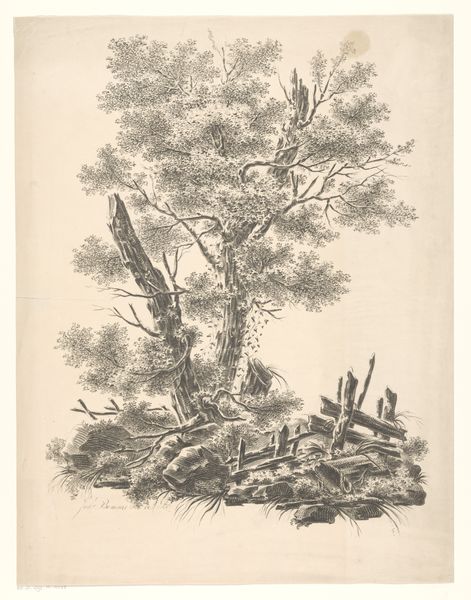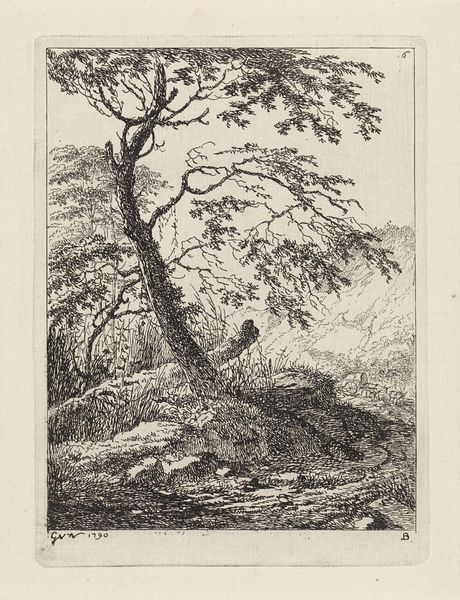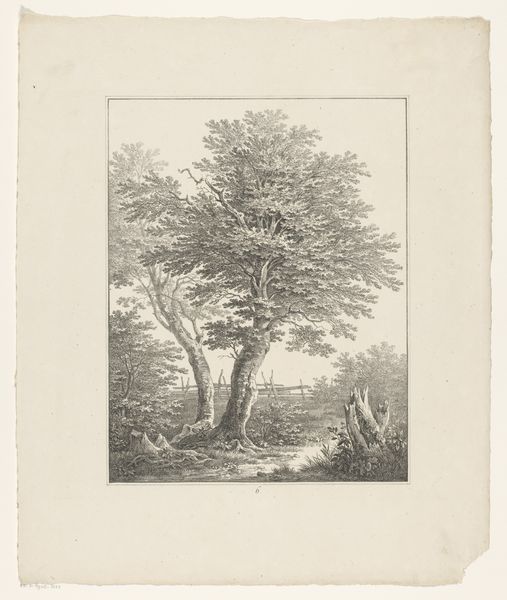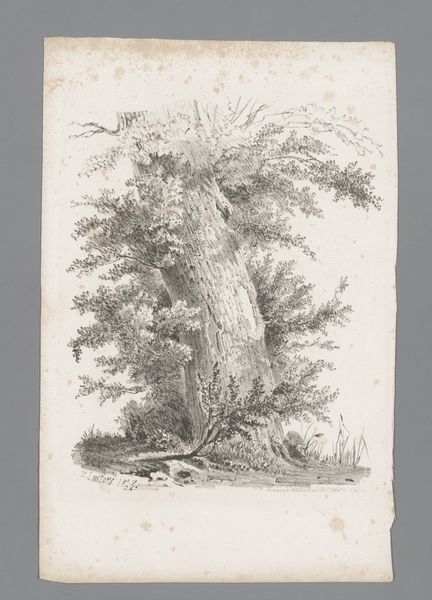
drawing, pencil
#
pencil drawn
#
drawing
#
landscape
#
figuration
#
pencil drawing
#
plant
#
romanticism
#
pencil
#
line
Dimensions: height 330 mm, width 230 mm
Copyright: Rijks Museum: Open Domain
Anthonie Willem Hendrik Nolthenius de Man created this etching, called Knotwilg, depicting a pollard willow. The motif of the pollard, or knot willow, is far from new. We see it in various Northern European landscapes throughout art history, embodying themes of resilience and adaptation. But consider how this image resonates beyond mere visual representation. The pollard willow, with its distinctive, pruned form, is a testament to human intervention and nature's response. In medieval iconography, trees often symbolized life, growth, and interconnectedness. The act of pollarding—severing branches to promote new growth—mirrors cycles of death and rebirth, resonating with deeply ingrained human experiences. This duality echoes in various cultural narratives, from ancient fertility rituals to contemporary ecological concerns. The image of the pollard willow taps into a collective, subconscious recognition of nature's enduring spirit, stirring emotions tied to survival and renewal. The pollard willow is a recurring symbol in our shared visual memory, constantly evolving yet firmly rooted.
Comments
No comments
Be the first to comment and join the conversation on the ultimate creative platform.
